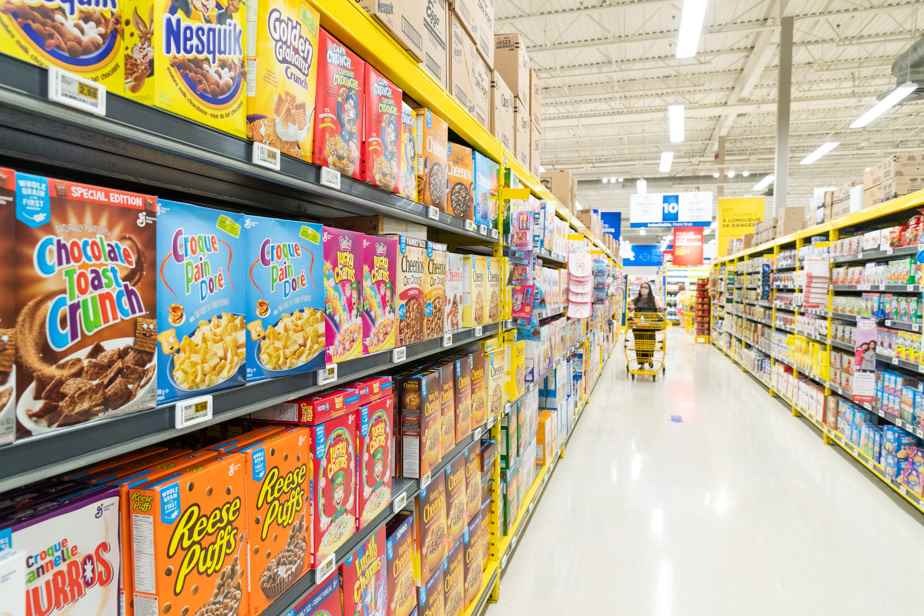Loblaw is the only Big Three grocery brand whose 2022 gross profits surpass its best performance in the past five years. This “erratically strong” performance by the retailer that manages Maxi and Provigo comes at a time when many consumers suspect grocery stores are taking advantage of inflation to line their pockets.
Posted at 5:00 a.m.
The finding comes from a report to be published this Thursday by Dalhousie University’s Laboratory of Analytical Sciences in Agrifood entitled “Profits in food distribution: a moral accessibility threshold? “.
The Laboratory team, led by Sylvain Charlebois, wanted to check whether there was indeed “abuse” exercised by the big brands. “And if there is abuse, what does this greed look like in food distribution? Can we create a moral tolerance threshold in food distribution? asked Mr. Charlebois before beginning his analysis.
His conclusion: In the case of Loblaw, “we’ve reached a point that could make some people worried because of the data that far exceeds the numbers that could represent a very, very good year.” »

PHOTO MARTIN CHAMBERLAND, ARCHIVES LA PRESSE
Sylvain Charlebois leads the team at the Agri-Food Analytical Sciences Laboratory at Dalhousie University in Nova Scotia. He is also a regular contributor to the Business section of The Press.
Thus, the researchers examined the average gross profits and the highest profits of the three major retailers (IGA, Metro and Loblaw) over the past five years, and then compared them to the performance of the first two quarters of 2022.
“Loblaw is the only major Canadian grocer whose gross profit in 2022 exceeds its best performance in five years, by $68.1 million in (first quarter) and $112.0 million in (second quarter)”, can we read in the report.
“When we did this exercise, we found that Metro and Empire/Sobeys’ returns were both underperforming their best years so far in 2022, with a deficit of $10.8 million. dollars and $36.9 million, respectively,” the document states.
Remember that faced with the constant increase in consumers’ grocery bills, the Competition Bureau of Canada recently decided to scrutinize the increase in food prices and to take an interest in competition between the main retailers. . A study has been launched. The results will be known next summer.
Moreover, Mr. Charlebois is also worried about what will happen in the coming year. Since mid-October, Loblaw has frozen the prices of its 1,500 No Name branded products until January 31. “But recent news suggests that these promises may have limits,” the report warns. Such a price freeze could have Canadians wondering what they can expect on their grocery bills in February 2023, once the price freeze ends. »
The signs react
For their part, the brands, like the Retail Council of Canada (RCCC), which represents them, continue to insist that their profit margins have remained stable in recent years.
“Like many others before it, this study looks at food prices without even analyzing the entire chain, including major price increases by major manufacturers,” reminded Johanne Héroux, Senior Director, Corporate Affairs. and Communication, from Loblaw, in an email sent to The Press.
The inflation is most visible in the retail industry, although we are not the cause. Inflation is a global issue, and the prices on our shelves are the result of many costs from many companies up the supply chain.
Johanne Héroux, Senior Director, Corporate Affairs and Communications, Loblaw
“Metro’s gross profit margins have remained stable for many years, as we have always said,” said Marie-Claude Bacon, vice-president, public affairs, of the Quebec retailer. “Despite the misleading claims of some, we work hard every day to deliver value to our customers and help them through the current global inflationary environment. »
No one at IGA called back The Press.
More transparency
In addition, Sylvain Charlebois took advantage of the publication of the report to demand more transparency from retailers, particularly in their financial statements, scrutinized by researchers.
For example, in addition to food, Loblaw sells drugstore products, cosmetics and clothing. “The frustration we had is simple: when you read the financial statements, you don’t separate food from cosmetics and pharmaceuticals. Everything is jumbled up. It’s time to untangle all that, ”he says.
“Will changing the way of presenting the figures calm things down? asks Michel Rochette, president for Quebec of the CCCD. “I’m not sure that if we changed it, people would be happier or less worried. I don’t know if being more transparent in the numbers would change anything. There are other groups that present their numbers differently and they still get finger pointing, even though their profit margins remain low. »

